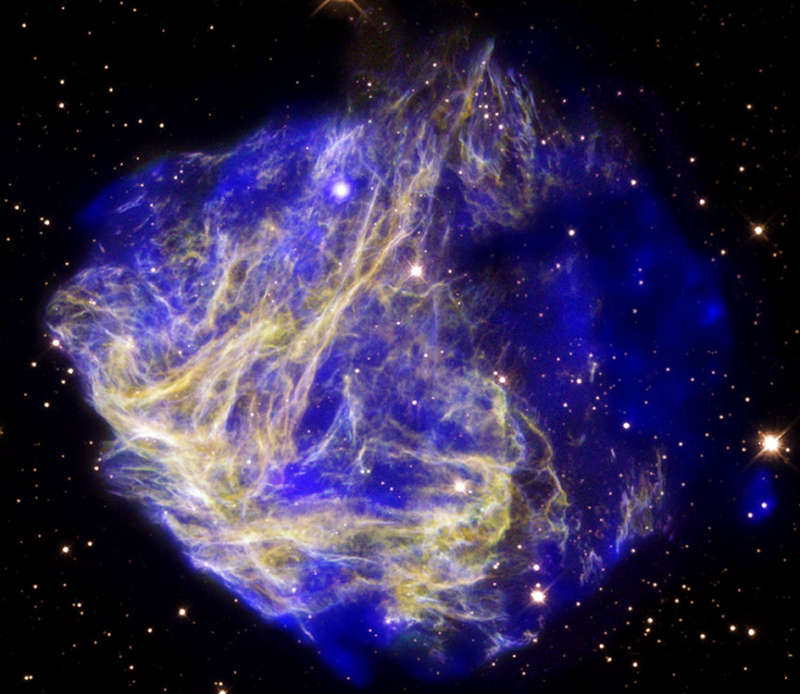
|
Credit & Copyright: X-ray:
NASA/CXC/Penn State/S. Park et al.;
Optical:
NASA/STScI/UIUC/Y. H. Chu & R. Williams et al.
Explanation:
What is that strange blue blob on the far right?
No one is sure, but it might be a speeding remnant of a
powerful supernova that was unexpectedly lopsided.
Scattered debris from supernova explosion N49 lights up the sky in
this gorgeous
composited image based on data from the
Chandra and
Hubble Space Telescopes.
Glowing visible filaments, shown in yellow, and
X-ray hot gas,
shown in blue, span about 30 light-years in our neighboring galaxy, the
Large Magellanic Cloud.
Light from the original exploding star reached Earth thousands of years ago, but
N49
also marks the location of another energetic outburst -- an extremely intense
blast of gamma-rays detected by satellites
about 30 years ago on 1979 March 5.
The source of the March
5th Event is now attributed to a
magnetar -
a highly magnetized, spinning
neutron star
also born in the ancient stellar explosion which created
supernova remnant N49.
The magnetar,
visible near the top of the image, hurtles through the
supernova
debris cloud at over 70 thousand kilometers per hour.
The blue blob on the far right, however, might have been
expelled asymmetrically just as a massive star was exploding. If so, it now
appears to be moving over 7 million kilometers per hour.
|
January February March April May June July August September October November December |
| ||||||||||||||||||||||||||||||||||||||||||||||||
NASA Web Site Statements, Warnings, and Disclaimers
NASA Official: Jay Norris. Specific rights apply.
A service of: LHEA at NASA / GSFC
& Michigan Tech. U.
Based on Astronomy Picture
Of the Day
Publications with keywords: N 49 - supernova remnant - magnetar
Publications with words: N 49 - supernova remnant - magnetar
See also:
- APOD: 2025 October 1 Á NGC 6960: The Witchs Broom Nebula
- APOD: 2025 June 9 Á Between Scylla and Charybdis: A Double Cosmic Discovery
- Supernova Remnant Cassiopeia A
- APOD: 2025 January 8 Á Supernova Remnants Big and Small
- APOD: 2024 September 18 Á The Mermaid Nebula Supernova Remnant
- APOD: 2024 April 16 Á Filaments of the Vela Supernova Remnant
- APOD: 2024 April 3 Á Unusual Nebula Pa 30
